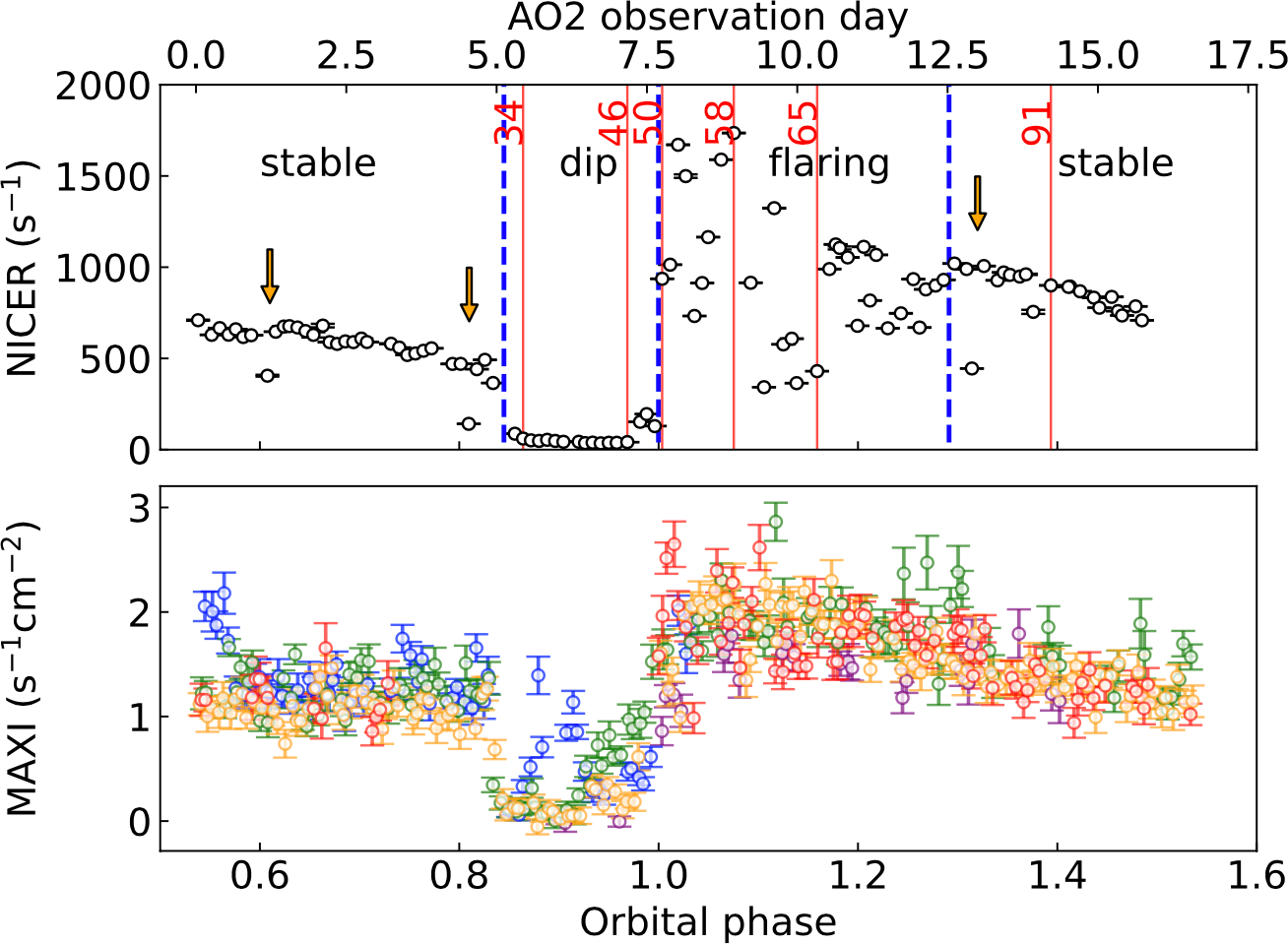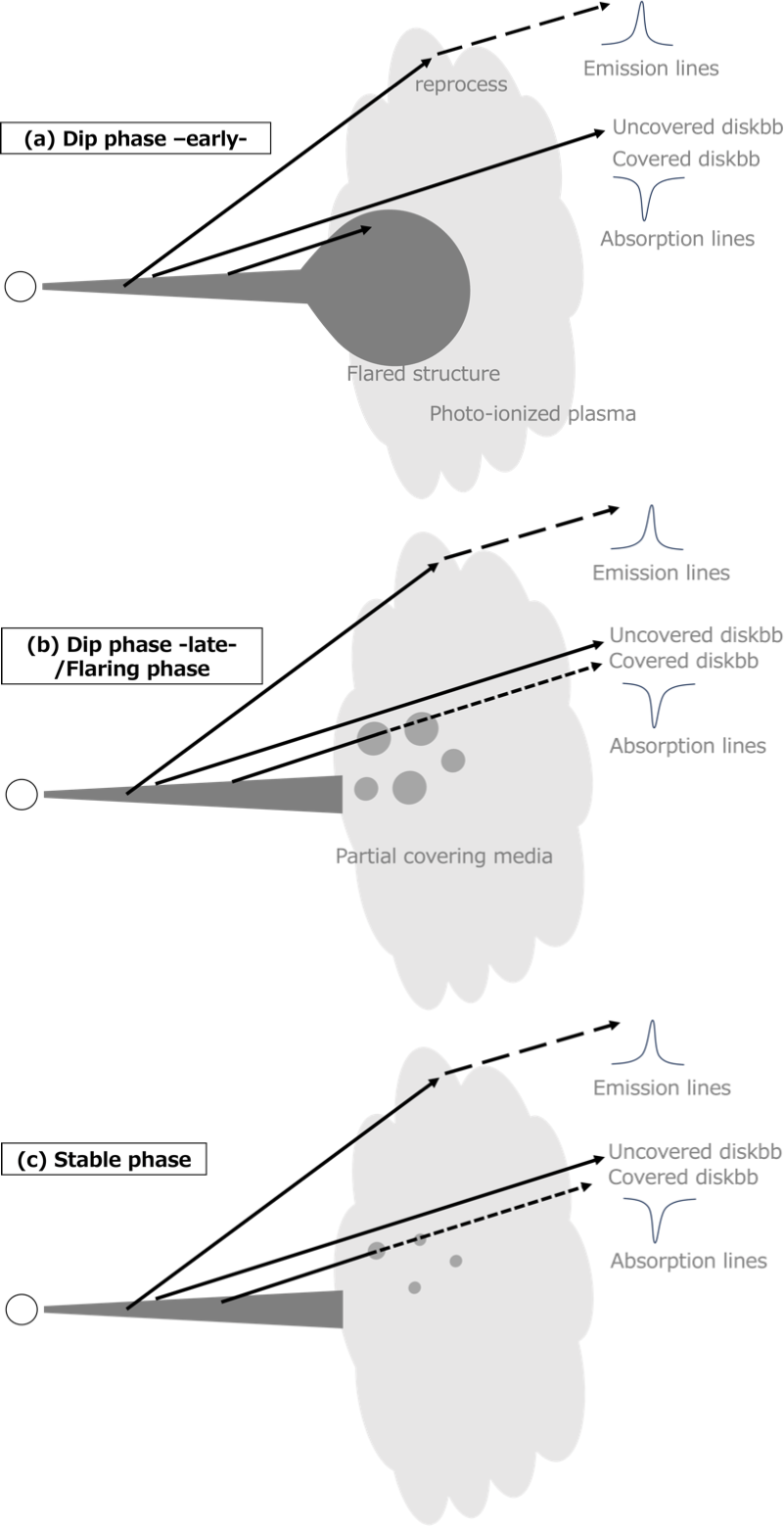NICER / ISS Science Nugget
for October 19, 2023
Connecting the Dots through Flares and Dips
The brightest source of X-rays in the constellation Circinus is a binary system in which a neutron star and its companion orbit one another with a period of 16.6 days. Cir X-1 is notable for its apparent youth (less than 4,600 years old, based on its location within a supernova remnant -- the "debris" of the explosion in which the neutron star was born). It is also unusual, among neutron star binaries with relatively short orbital periods, in the ellipticity of its orbit, another indication that the system is young and has not had time to circularize through mass-transfer and tidal effects. Thus, Cir X-1 provides an opportunity to explore the evolution of åccreting binary star systems at relatively early stages, but it has shown confounding behavior in past observations because of its seemingly chaotic variability on short and long timescales.
During August 2020, NICER fully sampled the Cir X-1 orbit consistently and with high-cadence, high-quality spectroscopic observations for the first time. For a General Observer (GO) investigation led by M. Tominaga (ISAS and Univ. of Tokyo, Japan), observations every 2-3 ISS orbits (average spacing of 3.9 hours) over 16 consecutive days provided crucial spectroscopic data with exposure times of a few hundred seconds in each "snapshot." For approximately half of the orbit, the X-ray count rate showed a slow but steady declining trend, with a stable spectrum characterized by a multi-temperature model of thermal emission typical of accretion disks (labeled "diskbb" in Figure 2). At the end of the declining portion was an interval of very low flux, a prolonged "dip," which in turn was followed by a "flaring" interval with erratic brightness, finally settling back into the stable state. A few very short dips in X-ray flux were also observed. Throughout the orbit, characteristic spectral emission lines were seen from magnesium, silicon, sulfur, and iron atoms; all were constant in their brightness except for iron.
The GO team used the spectroscopic results to construct a model of the gas and plasma structures around the neutron star. The model accounts for all of the observed phenomena: the prolonged dip is explained by a dense "blob" of obscuring material that circulates at the orbital period, perhaps associated with the impact point between the stream of matter from the companion star onto the outer accretion disk; as the blob breaks up at the tail end of the dip, we see "flares" in the gaps between the pieces of the obscuring material; the constancy of the elemental emission lines -- other than iron -- suggests that the material responsible for this emission is far from the neutron star and reprocesses the disk emission; the latter includes iron, and the emission/absorption transition reveals the relative dominance of the iron line from the disk relative to that emitted in the surrounding plasma.
This work was recently accepted for peer-reviewed publication in The Astrophysical Journal.


Left: X-ray brightness across the full 16.6-day orbit of the Cir X-1 neutron-star binary, measured with NICER (in photons per second, upper panel) and JAXA's MAXI payload (lower panel, 5 successive orbits plotted with points of different colors). Divisions between the stable, dip, and flaring intervals are shown with blue dashed vertical lines; orange arrows indicate short dips; and red lines/numbers refer to times of specific spectroscopic measurements (Figure credit: Tominaga et al. 2023).
Right: A sketch of the structures around the Cir X-1 neutron star and its accretion disk at various orbital phases, inferred from NICER spectroscopy. In each panel, the neutron star's accretion disk is seen edge-on at left, and the observer views the system from the upper right. Emission lines are observed throughout the orbit, but the iron line transitions to absorption during the flaring interval. Both emission and absorption features from highly ionized atoms are thought to arise from reprocessing of inner-disk radiation within a more-distant plasma (Figure credit: Tominaga et al. 2023).
<< Previous
Main Index
Next >>